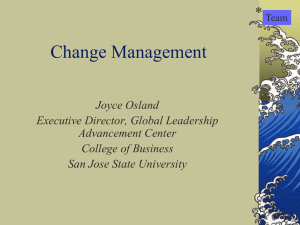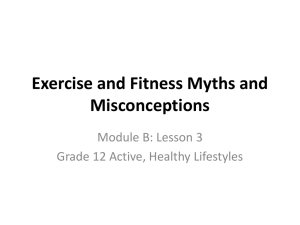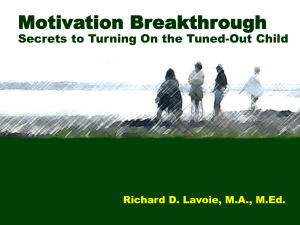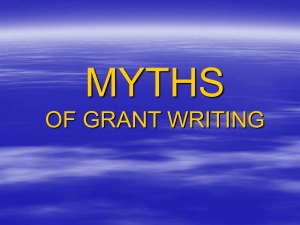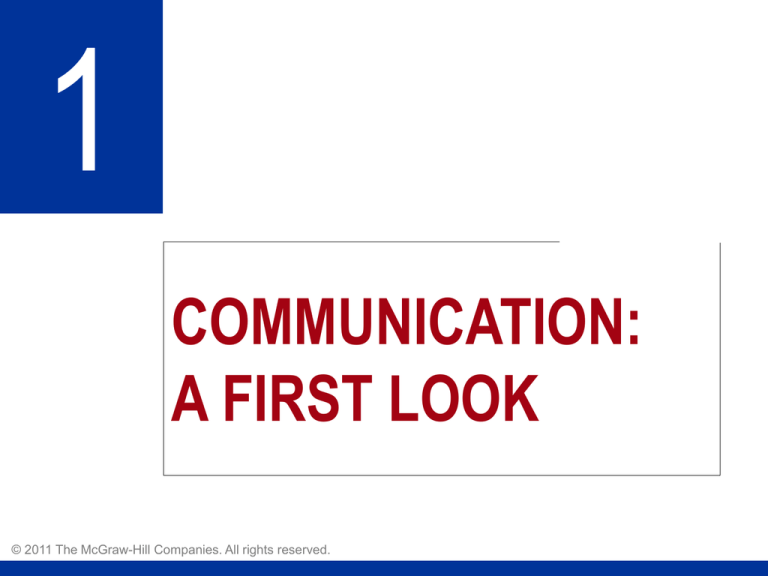
1
COMMUNICATION:
A FIRST LOOK
© 2011 The McGraw-Hill Companies. All rights reserved.
[What’s To Come
» Why We Communicate
» The Nature and Types of Communication
» Dispelling Some Communication Myths
» Building Your Communication Competence
[Why We Communicate
» Physical needs
» Relational needs
» Identity needs
» Spiritual needs
» Instrumental needs
The Nature and Types of
Communication
[
» Scholars have used three models to
demonstrate how the process of
communication works:
• Action Model
• Interaction Model
• Transaction Model
The Nature and Types of
Communication
[
» The Action Model treats communication as a
one-way process
• A source formulates an idea
• The source encodes the idea in the form of a
message
• The message is sent through a communication
channel
• A receiver decodes the message
• Interpretation is affected by noise
The Nature and Types of
Communication
[
» The Interaction Model treats communication
as a two-way process
» Includes all elements of the Action Model,
and also suggests that:
• Receivers provide feedback through verbal and
nonverbal behavior
• The context of communication affects its
meaning
The Nature and Types of
Communication
[
» The Transaction Model treats
communication as a multi-way process
» Includes all elements of the Interaction
Model, and also suggests that:
• Both parties in conversation are simultaneously
senders and receivers
• Communication flows in both directions at once
The Nature and Types of
Communication
[
» Communication has many characteristics
•
•
•
•
•
Relies on multiple channels
Passes through perceptual filters
People give communication its meaning
Has literal meanings and relational implications
Sends messages, whether intentional or
unintentional
• Governed by rules
The Nature and Types of
Communication
[
The Nature and Types of
Communication
[
» Communication has many characteristics
•
•
•
•
•
Relies on multiple channels
Passes through perceptual filters
People give communication its meaning
Has literal meanings and relational implications
Sends messages, whether intentional or
unintentional
• Governed by rules
The Nature and Types of
Communication
[
» Five types of
communication
•
•
•
•
•
Intrapersonal
Interpersonal
Small group
Public
Mass
Dispelling Some Communication
Myths
[
» Myth: Everyone is a communication expert
» Myth: Communication will solve any problem
» Myth: Communication can break down
» Myth: Communication is inherently good
» Myth: More communication is always better
Dispelling Some Communication
Myths
[
Dispelling Some Communication
Myths
[
» Myth: Everyone is a communication expert
» Myth: Communication will solve any problem
» Myth: Communication can break down
» Myth: Communication is inherently good
» Myth: More communication is always better
Building Your Communication
Competence
[
» Competent communicators are effective and
appropriate
• Effectiveness describes how well your
communication achieves its goals
• Appropriateness describes how well your
communication complies with the rules and
expectations of the social situation
Building Your Communication
Competence
[
» Competent communicators share many
characteristics and skills
• Self-monitoring
• Adaptability
• Empathy
• Cognitive complexity
• Ethics
[For Review
» What needs does communication help us
meet?
» How does communication work, and what
misconceptions do we have about it?
» What particular skills characterize
competent communicators?




